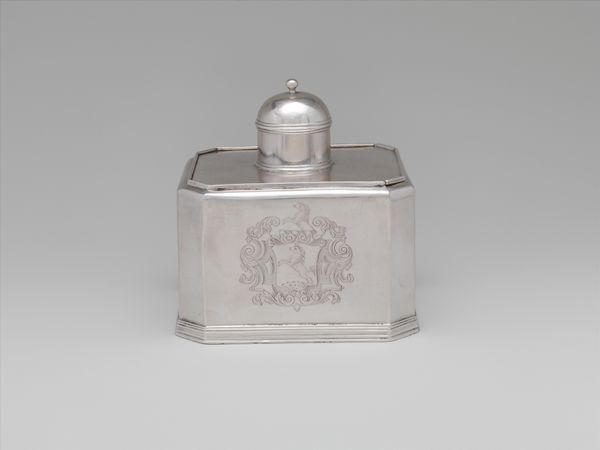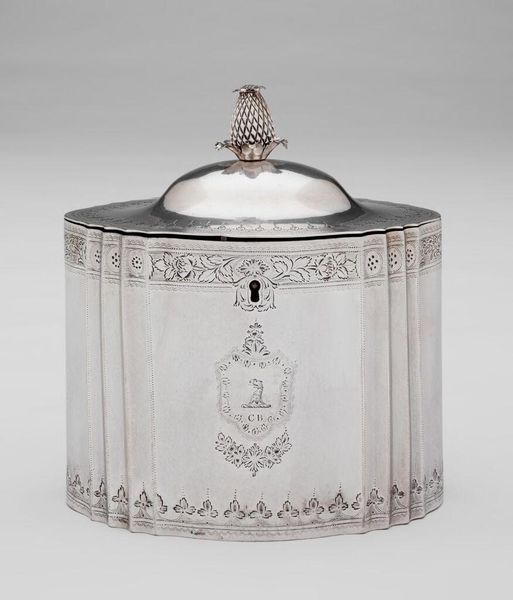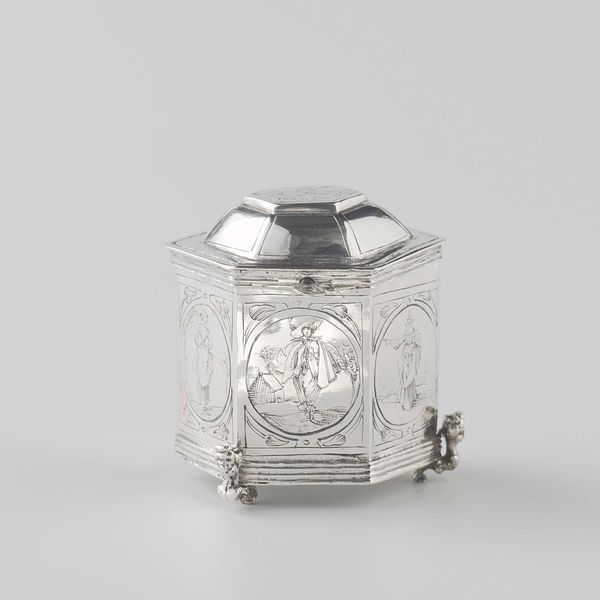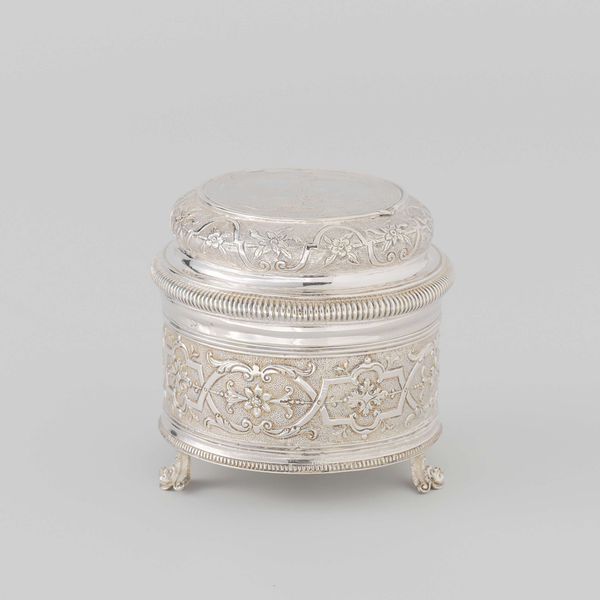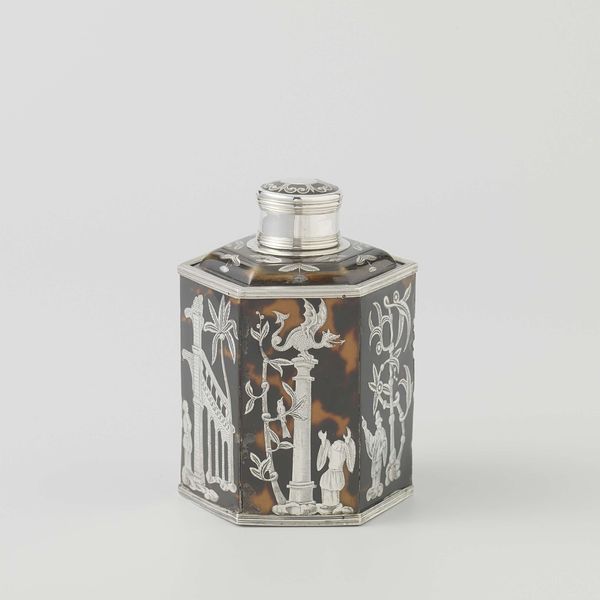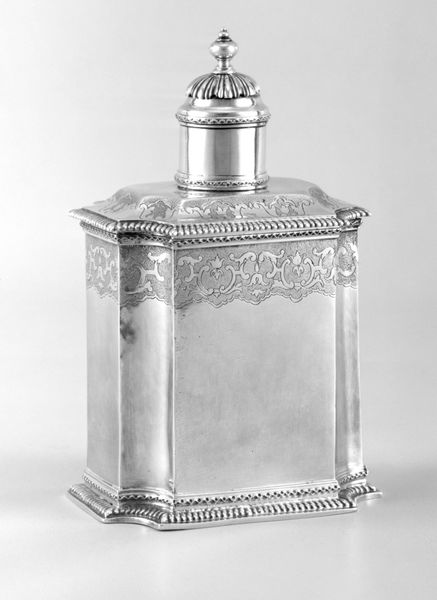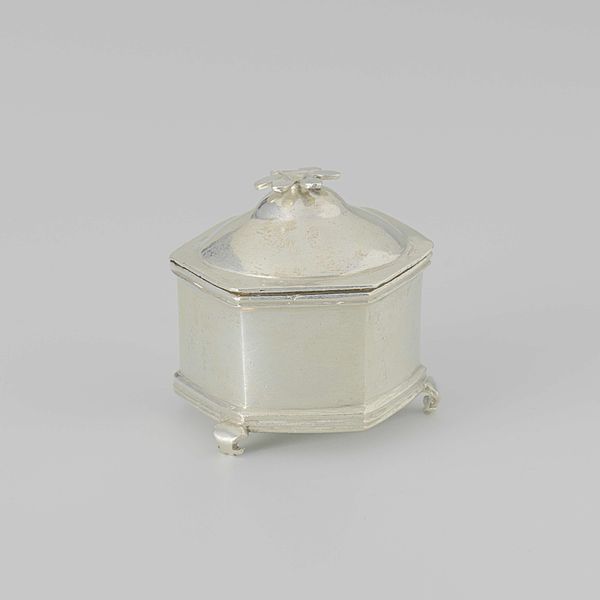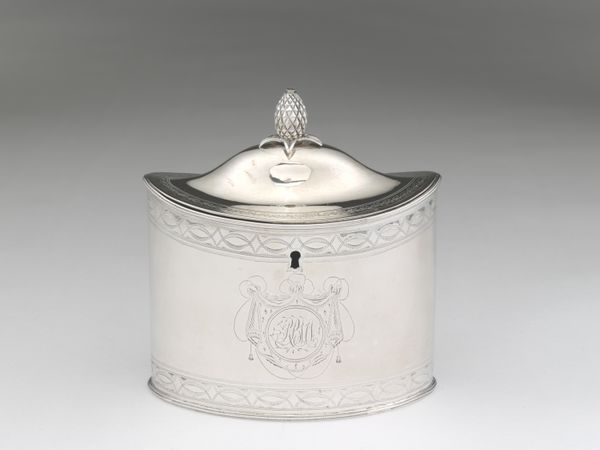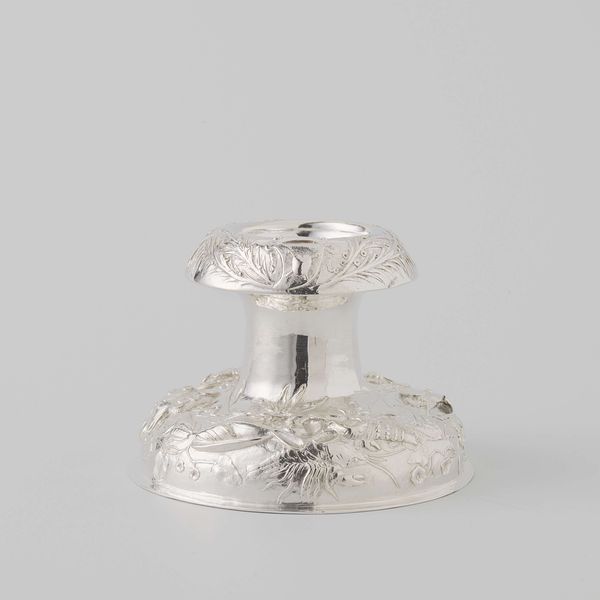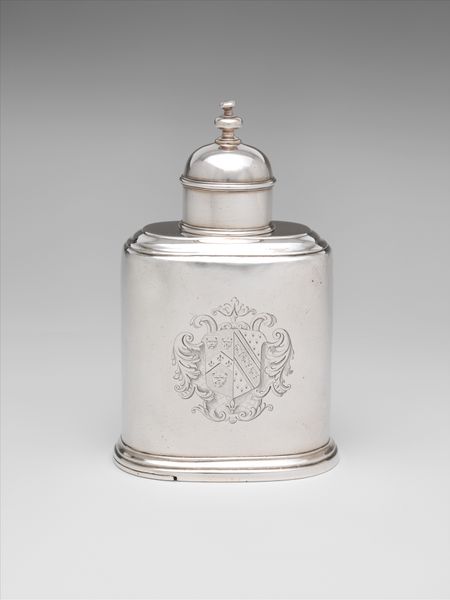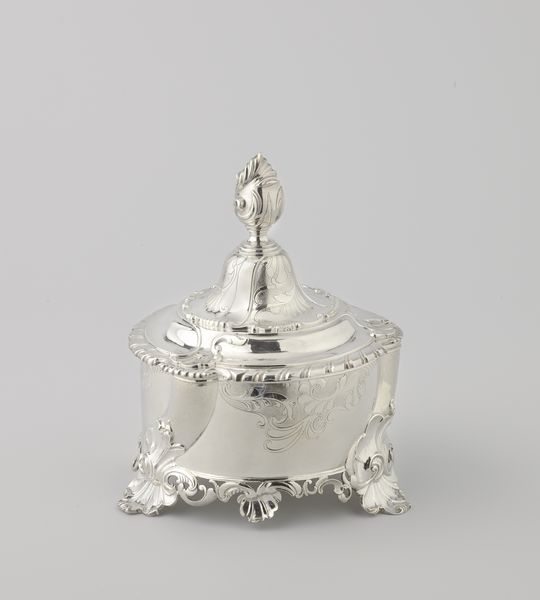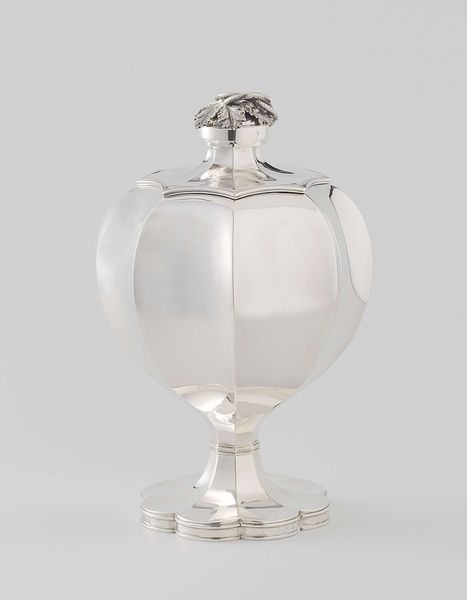
Rechthoekige theebus, aan alle zijden versierd met gedreven chinoiserieën 1764
0:00
0:00
carving, silver, metal, sculpture
#
decorative element
#
carving
#
silver
#
metal
#
sculpture
#
decorative-art
#
rococo
Dimensions: height 10.0 cm, width 9.4 cm, depth 5.8 cm, weight 265 gr
Copyright: Rijks Museum: Open Domain
This rectangular tea caddy, adorned with chased chinoiseries, was crafted by Hendrik Swierinck, who lived from 1693 to 1772. These decorations reflect a historical fascination with Asia, a period when trade routes brought new commodities, like tea, and sparked cultural exchanges, however imbalanced, between Europe and the East. The imagery, known as chinoiserie, blends real and imagined aspects of Chinese culture, shaped by European fantasies and colonial encounters. As you examine the intricate details, consider how the artistry merges both admiration and misrepresentation. The tea caddy thus becomes a symbol of global trade and the complex dynamics of cultural appropriation. It reminds us to consider the power and privilege inherent in cultural exchange, and invites us to reflect on the stories we tell about ourselves and others.
Comments
No comments
Be the first to comment and join the conversation on the ultimate creative platform.
